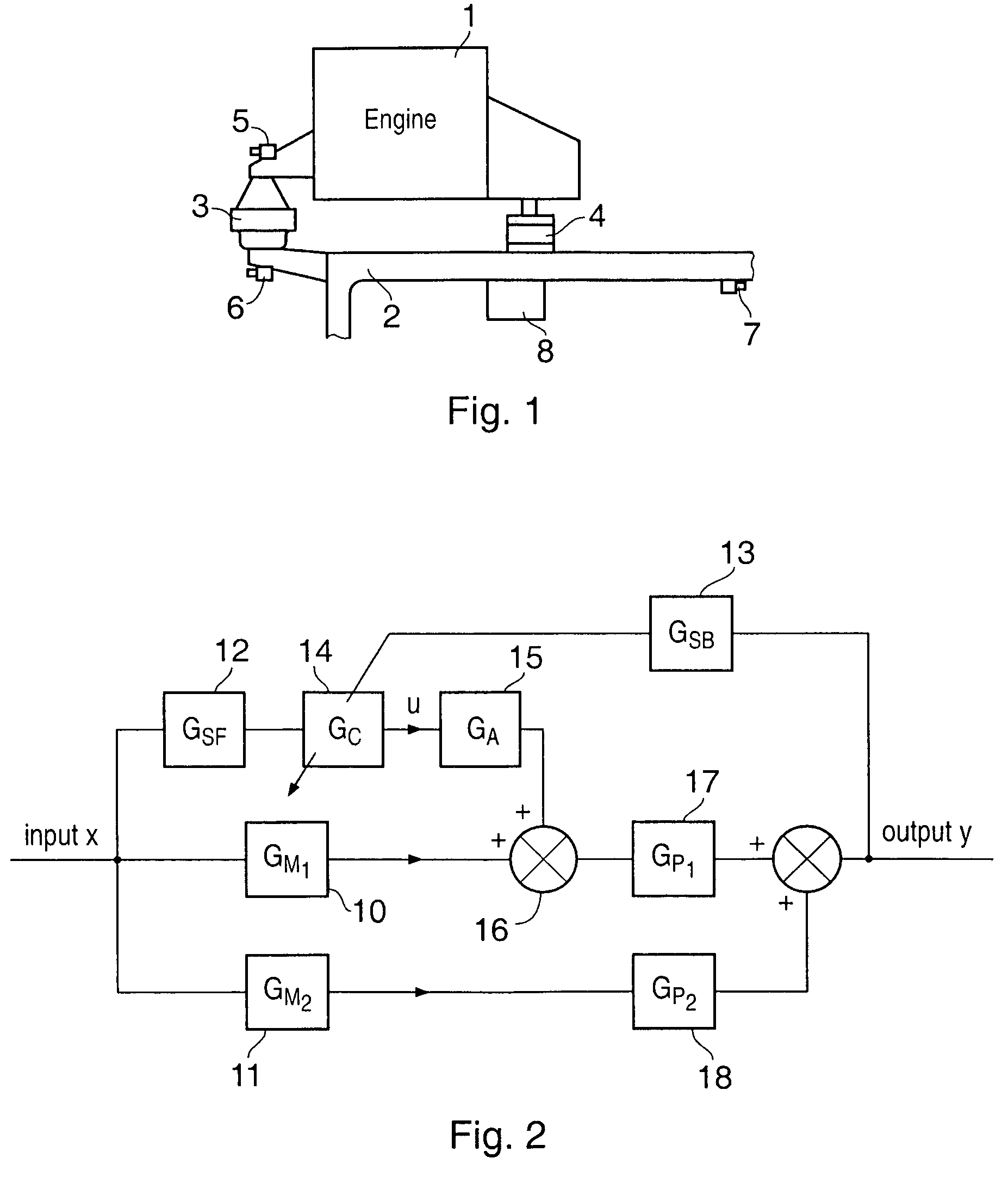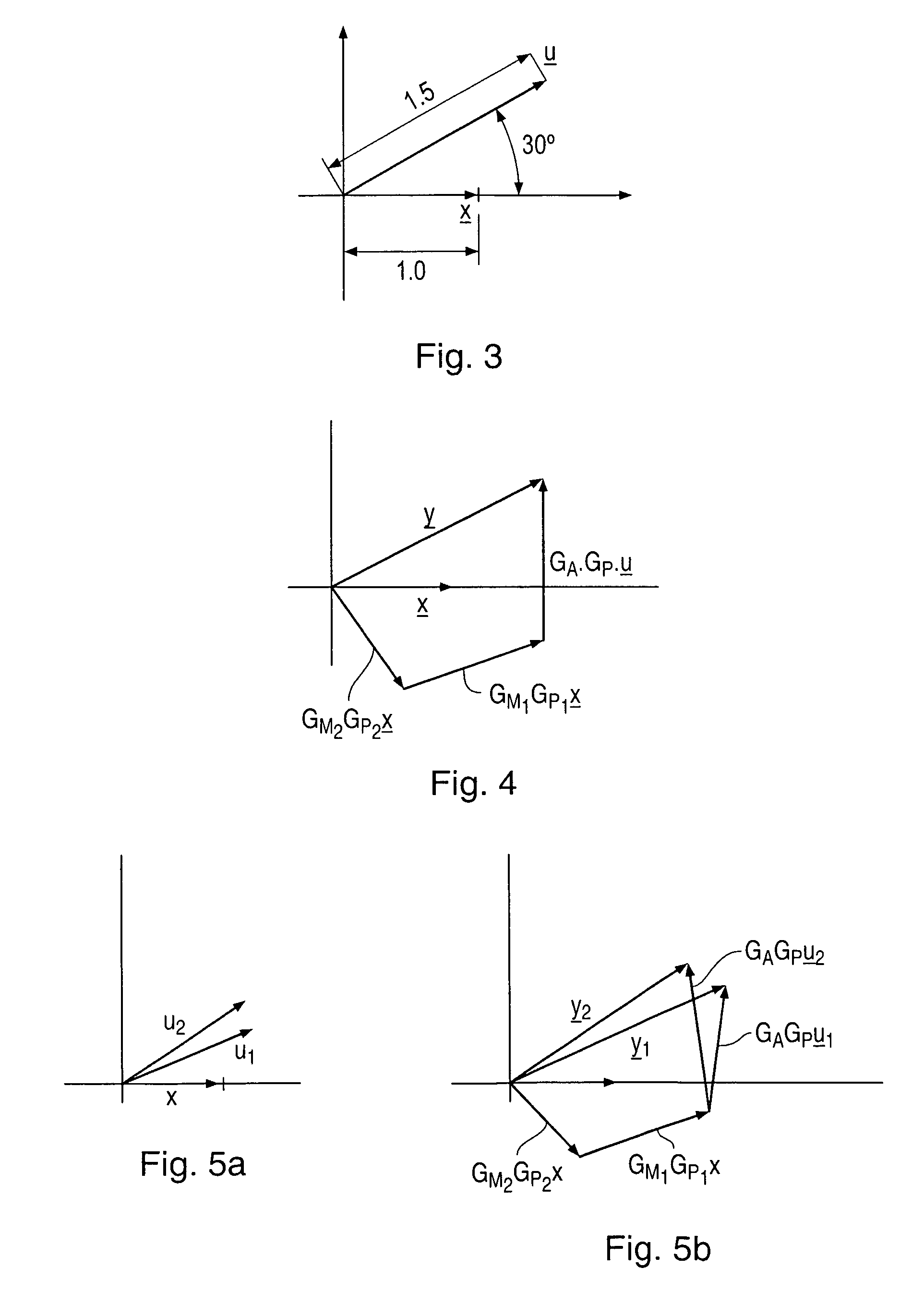Controlling vibrations
a technology of vibration and control, applied in the direction of shock absorbers, instruments, static/dynamic balance measurement, etc., can solve the problems of not providing a mounting device in which there was active imposition of vibrations to counter the vibrations applied to the mounting device, changing both vibration amplitude and phase, and what might appear to be the correct phase of a cancellation signal at one point in the structure may well be detrimental at another poin
- Summary
- Abstract
- Description
- Claims
- Application Information
AI Technical Summary
Benefits of technology
Problems solved by technology
Method used
Image
Examples
Embodiment Construction
[0073]Referring first to FIG. 1, an automobile engine 1 is mounted on a chassis 2 via a mounting device 3 which, as will be described in more detail later, provides active damping of the vibrations of the engine 1 relative to the chassis 2. The engine 1 may also be connected to the chassis 2 via other mounting devices 4 which do not provide such active damping. A feed-forward sensor 5, which may be e.g. an accelerometer, senses the input vibrations applied to the mounting device 3 from the engine 1, and a feed-back sensor 6 senses the vibrations which are transmitted to the chassis 2 via the mounting device 3.
[0074]The mounting device 3 can be considered to have two elements, namely a passive damping element, and an actuator element operating in parallel to the passive element. A control system senses the vibrations from the engine 1 via the sensor 5, and controls the actuator of the mount 3 with the intention of minimising the output sensed by the sensor 6. The outputs of the senso...
PUM
 Login to View More
Login to View More Abstract
Description
Claims
Application Information
 Login to View More
Login to View More - R&D
- Intellectual Property
- Life Sciences
- Materials
- Tech Scout
- Unparalleled Data Quality
- Higher Quality Content
- 60% Fewer Hallucinations
Browse by: Latest US Patents, China's latest patents, Technical Efficacy Thesaurus, Application Domain, Technology Topic, Popular Technical Reports.
© 2025 PatSnap. All rights reserved.Legal|Privacy policy|Modern Slavery Act Transparency Statement|Sitemap|About US| Contact US: help@patsnap.com



